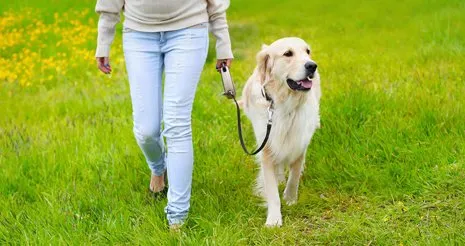Ever Worry Your Dog May Be Experiencing Anxiety?

Anxiety in dogs is just as much of a hurdle as anxiety in humans is. Dogs have feelings just like we do and it can leave you, as apet parent, feeling frustrated and helpless. The truth is, there are ways to help reduce anxiety in dogs.
Fear vs. Anxiety
While it may seem that fear in dogs is similar to anxiety…it is not.
Fear
Fear is what a dog feels as a response to a threat. This response comes naturally in dogs. It’s an innate response to real or imagined threats. Whether real or imagined, the threat is what we commonly have come to associate as a fight or flight response. We have all experienced this response at some point in our life. Dogs feel it too. Just like humans, the fight or flight response in dogs is a protection response. If a dog, or any other animal, did not have this response his longevity would be strictly compromised. Symptoms can manifest themselves in many ways. Some signs of fear in dogs may be withdrawal, hiding, submissive behaviors, shaking, or changes in body language.
Anxiety
Unlike fear, anxiety comes from a perceived danger. A dog may experience the same feelings associated with actually being enveloped by the perceived danger. In short, the dog is not in danger, but psychologically he is. There are many different symptoms of anxiety in dogs. Some dogs bark, cry, hide, destroy property or run away. While others will vomit, shake or urinate uncontrollably. Any or all symptoms of anxiety in dogs may be present. It really just depends on the dog.
Dogs may also experience a fear related to one or more specific things. This type of fear is called a phobia. Phobia’s can be almost anything and are often associated with bad memories for dogs – sounds, people, or even something seemingly very simple, like a hat or sunglasses.
Reducing Anxiety
Reducing anxiety in dogs can be a long trial and error journey. It’s important to work with your veterinary professionals to help you along the way if you are not experiencing any success at home.
Be patient. Maintaining a calm, assertive gentle demeanor is the first key to success in reducing anxiety in dogs. In fact, you probably won’t achieve success otherwise. If you feel yourself getting stressed or angry with your dog, you need to walk away. Take a few deep breaths. Your dog will take on your stress whether you realize it or not. Punishment should never be used to combat behaviors associated with anxiety in dogs.
Natural Remedies
While you are working to reduce in anxiety in dogs, it’s important to use whatever resources you can along the way to make your dog comfortable. There are natural remedies specifically made to help your dog return to or remain in a calm state of mind.
One highly regarded product is Rescue Remedy. Rescue Remedy combines flower essences to help relax your dog. You can rub the remedy on your dog’s ears of paws. Adding a few drops to your dog’s water bowl or food is also a way to help eliminate or reduce stress. The best part is that it’s an all-natural, alcohol free product that won’t sedate your dog the way in which drugs will. Within minutes, your dog will begin to feel better.
Sentry Calming spray is another popular natural product on the market. The pheromones in the product are similar to the pheromones a mother dog releases just after giving birth to her puppies. The result is the same calming essence.
Pressure Therapy also works wonders, too. Pressure therapy aims to bring out the same effects that a gentle hug would. A thunder shirt is used by many pet parents to keep their dogs and cats calm and anxiety free. A weighted blanket is used for humans much in the same way as the thunder shirt is used for dogs.
Behavior Modifications to Reduce Anxiety in Dogs
Positive Reconditioning
Positive Reconditioning is a behavior modification technique used to reduce anxiety in dogs. The goal is to help the dog learn new responses to people, places, things that once brought on anxiety. Simply put, you are exposing your dog to the very thing that is causing the anxiety while simultaneously providing positive reinforcement, or reassurance, to him. You know your dog best. What makes him happy? Toys, treats, hugs, belly rubs, or whatever your dog enjoys can be used. Keep in mind once again that you must remain calm. Also keep in mind that it take weeks or months for your dog to relearn his response to the negative stimuli. You have to be in it for the long hall to see any success with this.
Provide a Distraction
Redirection is also used to help reduce anxiety in dogs. Of course, you have to be with your dog for this to work. Redirection is simply providing a distraction to your dog while he is experiencing anxiety. You probably do this all of the time with your kids, husband or wife. Get your dog focused on something else. A ride in the car, a favorite toy or treat or even grabbing the leash, if your dog loves walks, will redirect your dog’s attention thereby reducing anxiety.
As you take the journey of reducing anxiety in dogs, consult the professionals. Groomers, Dog trainers, veterinarians, physical therapists are all there to help you! Chances are, they have much more knowledge about the process of reducing anxiety in dogs than you do, don’t you think? They will also do a better job of keeping their emotions out of it than you. Stay the course and remember, stay calm. You’re on your way to helping reduce anxiety in your dog!
